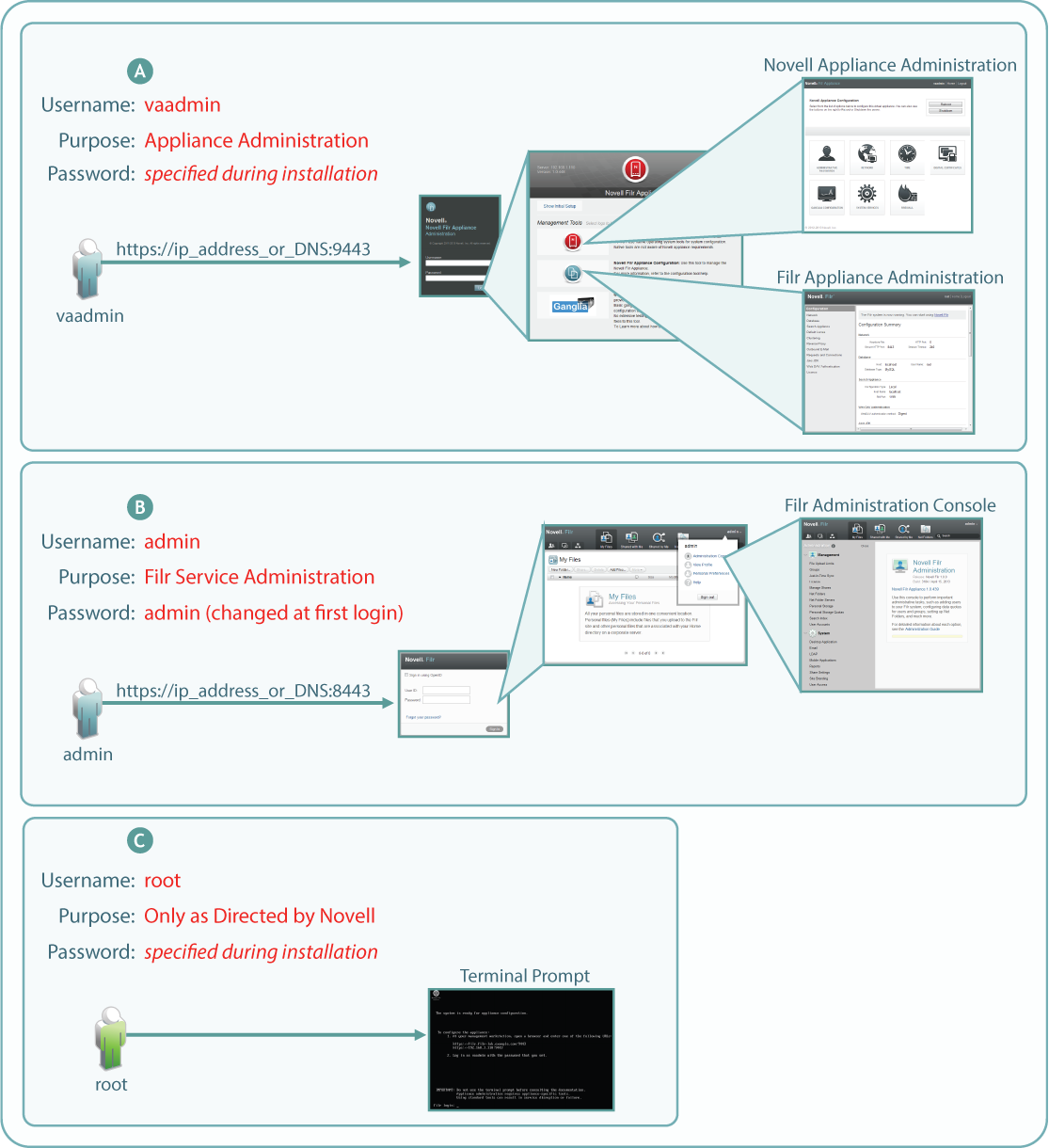3.1 Filr Administrative Users
Because Filr is an appliance that is installed and administered in different phases, you install and then administer Filr using two different administrative users. Each user utilizes different Web-based administrative tools, as illustrated in Figure 3-1 and explained in the table that follows it.
Figure 3-1 Filr Administrators: Their Purposes, Passwords, and the Interfaces They Use

|
Letter |
Details |
|---|---|

|
vaadmin takes over the installation process after the initial deployment is finished. It then configures appliance services so that they are fully operational. You use this administrative user whenever appliance settings need to be changed or adjusted. Installing certificates and licenses, adjusting the network configuration, and setting up Filr clustering are just a few of the tasks that you use vaadmin to perform. |

|
After the appliances are fully operational, most of the administrative work is accomplished using the Filr admin user account. The first time you log in, the username/password are admin/admin. You are prompted to change this. See You use this administrative user to do the following:
|

|
Novell Filr and the appliances associated with it are special-purpose virtual machines. They are designed to be configured and managed using the Web-based management consoles (above) . Although it is possible to access the appliance using the terminal prompt or through an SSH connection, Novell strongly discourages this practice because it can result in service disruption or more serious problems, including data loss. If you contact Novell Support with a Filr support incident, you might be asked to access the appliance’s terminal prompt as the root user. Otherwise, there are no Filr administrative tasks that involve root or the bash interface. |